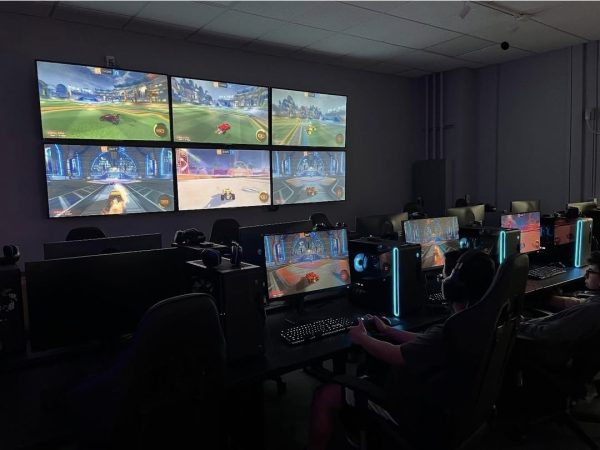Russian-Ukrainian Conflict: A Year Overview
Photo by Max Kukurudziak on Unsplash
A year of bitter and brutal war between Russia and Ukraine has impacted many individuals globally. Over the course of a year, media coverage has had a significant effect on how the public views the war, as people rely on the press for information about the conflict. There is estimated to have been over 250,000 casualties in total, but the exact number has not yet been verified. As the death toll continues to rise, Ukraine’s economy and its people suffer from the devastating damage caused by Russia’s constant attacks. Since Russia’s invasion of Ukraine on February 24, 2022, at least fourteen million Ukrainians have left their homes, and over eight million have fled to other countries. These migrants have been forced to endure many challenges, hardships, and significant changes in their lives.
Olena Fedchenko, a refugee from Kharkiv, Ukraine, now living in Brooklyn, New York, described her experiences from the war and how it has affected her life. She said, “On the day that that the war first started, I received a phone call from my brother at 4:30 in the morning. He informed me that he was picking my daughter and me up in thirty minutes. I looked out my window, and I saw explosions. The next two weeks, we spent hiding in people’s homes away from the city, until we reached Poland, where we lived for two months. Through a program, we were able to come to America in May of 2022.” When asked if she thinks that she will be going back to Ukraine soon, Fedchenko replied, “I do want to go home, but I do not know when I can go back.” Fedchenko’s story is only one of the many unimaginable stories that Ukrainians have faced.
Both Russia and Ukraine have established a draft during the war. Hundreds of thousands of people have died in the war so far, and many of which who have been forced to join the military. In Ukraine, the draft includes men between the ages of 18 and 60. According to a CBS News article (cbsnews.com), “Russia has suffered between 175,000 and 200,000 casualties during its war in Ukraine, including 40,000 to 60,000 killed.”
Children have been severely affected by this ongoing conflict as well. As claimed in a January 9, 2023, Upfront (scholastic.com) magazine article entitled, “Children of War,” “More than a third of Ukrainian children—2.2 million—have fled their homes, with many of them displaced two or three times when additional territory was lost, according to humanitarian agencies. More than half of Ukraine’s children—3.6 million—may not have a school to go to this year.” Many young, innocent children are suffering from the effects of the war and are not being provided with an education. The article also reveals, “The war has ripped thousands of families apart, as brothers, and fathers have been drafted or killed, and children forced to flee, leaving grandparents and friends behind.” Children are being separated from their parents or have lost their parents due to the war. Other concerns for children include the mental and physical aspects of the traumatic experiences. Kids are experiencing physical injuries, as well as “toxic stress,” due to the trauma and sacrifices that many have experienced. Experts such as psychiatrists and social workers have recognized psychological “scars” or PTSD within many children because of the war.
Freshman Daniella Inserra shared, “I am surprised that the war is still going on because Russia has always been portrayed a strong, powerful country. Compared to Ukraine, it seemed realistic for Russia to be victorious.” Her outlook is a common one, as many people are shocked that Ukraine has not yet surrendered or lost the war. Russia’s military is larger in size; therefore, it was not anticipated for Ukraine to have the ability to hold off Russia for this long.
“I just don’t hear as much about the war as I did when it first began, even though it is still happening now,” Inserra added. This exemplifies the way in which the war is not being reported on as frequently as it was when the war first began. Journalism and media coverage is an important can influence the perspectives of individuals involved in the war, as well as those not directly affected by it.
When asked about her reaction to the media’s response to the war, social studies teacher Olga Zisel shared, “[The press] chooses what to report on, so, unfortunately, if the news that brings the most attention and money is about the Kardashians, then they will report that story over serious matters. It’s up to individuals to deliberately look at the news where important current events articles are written, and hopefully people do that, instead of clicking on insignificant reporting.” It is imperative for students and individuals to obtain information from reliable sources and to be aware of what is happening around them, instead of trusting sources that spread false information. In the modern world, it is difficult to recognize or identify the truth from the propaganda and misleading material that can be found online.
The conflict in Russia and Ukraine continues, even after an entire year of constant attacks. The number of refugees from each country is increasing dramatically, as the physical and emotional damage caused by the war is becoming significantly worse. Many children are displaying signs of emotional and physical trauma. Other issues being faced include the rise of social and political crises caused by the decline of the Ukrainian economy. Innocent people in Russia and Ukraine are forced to endure the issues, effects, and overwhelming consequences of this prevailing conflict.








































